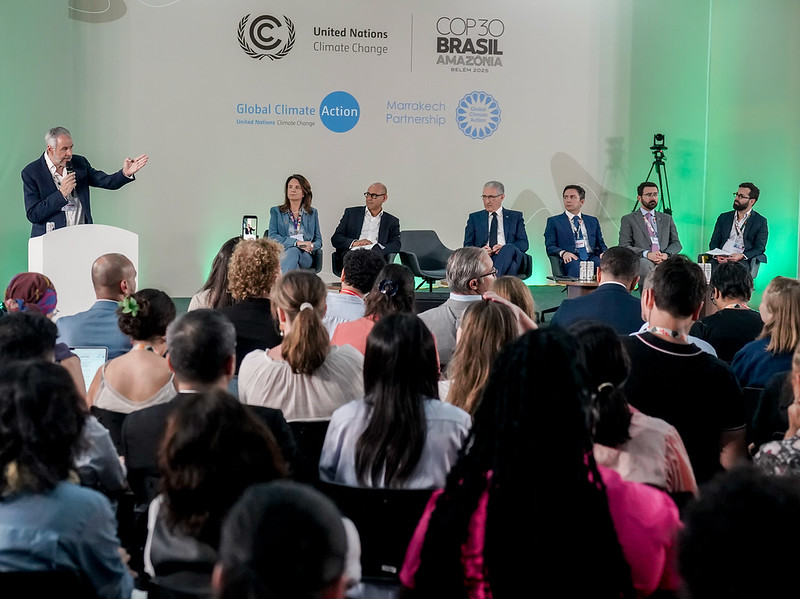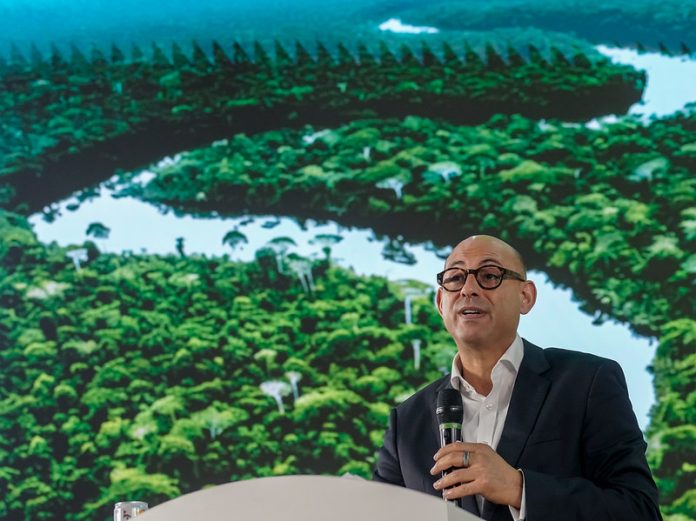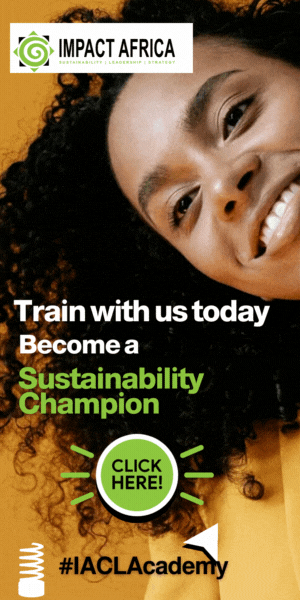At COP30 on November 15, 2025, UN Climate Change Executive Secretary Simon Stiell told ministers and financiers that climate finance is “the lifeblood of climate action,” urging clearer, faster and fairer flows to developing countries to turn plans into implementation and to close widening adaptation shortfalls.
The call comes as negotiators at the summit wrestle with a stalled agenda and a high-profile Baku-to-Belém Roadmap that seeks to mobilise US$1.3 trillion annually for developing-country climate action by 2035, even as African governments confront mounting adaptation needs, high debt service and persistent barriers to private investment.

For Africa the debate at Belém is not abstract. The continent receives a disproportionally small share of global climate finance while shouldering the brunt of climate impacts.
Recent analysis show adaptation accounted for roughly 32 percent of Africa’s climate finance in 2021–22, down from near 39 percent in 2019–20 as more capital chased “dual-benefit” projects; yet the Adaptation Gap estimates that needs remain an order of magnitude larger than current flows, often 10 to 18 times higher depending on methodology.
The practical consequence is straightforward: countries face a pipeline of shovel-ready resilience projects, from coastal protection in Senegal to drought-resistant seed programmes in the Sahel, that cannot proceed without concessional grants, guarantees and tailored blended instruments.
The Baku-to-Belém deliverable, pitched as a blueprint to scale finance to US$1.3 trillion, aims to knit together public, private and innovative sources while nudging multilateral development banks toward greater risk appetite.
However, the roadmap’s ambition collides with political reality. Wealthy countries remain reluctant to deliver predictable grant-based support at the scale required, and private capital continues to shun many African risk profiles where returns are uncertain and currency, regulatory and offtake risks are poorly mitigated. Unless the roadmap converts its broad measures into instruments that systematically de-risk investments and lower transaction costs for host governments, much of its headline figure will remain theoretical.
Africa still counts roughly 600 million people without reliable electricity, and while large utility projects are attracting interest, distributed generation, storage and grid upgrades need finance structures that reflect local realities: long tenor, currency hedging, blended concessionality and technical assistance to strengthen procurement and contract enforceability.
Standard Bank’s recent disclosure that it has participated in over 12,000 MW of closed deals and is backing hybrid renewable clusters with nearly R1.92 billion in equity underlines how commercial institutions can mobilize capital when credible pipelines and domestic bank partners exist. These examples are concentrated: South Africa, Kenya and parts of West Africa are better served than fragile states in the Sahel or island nations where fiscal space and institutional capacity are thin.
Debt dynamics complicate the ledger. Many African governments enter climate financing conversations with elevated debt burdens, which constrain the use of market borrowing for climate projects and make concessional finance and non-debt instruments indispensable.
Practical tools discussed at COP30, debt-for-climate swaps, guarantees from multilateral development banks, and risk-sharing facilities that leverage limited public funds to mobilize private capital, are not panaceas but can shift the economics. Their effectiveness depends on coordinated creditor action, standardized legal frameworks and transparent tracking so that freed fiscal space translates into tangible adaptation or clean energy delivery rather than short-term budget support.
Countries still need to prepare clear, well-designed project plans that investors can trust, with simple rules and predictable ways for those projects to earn money. They also need climate finance deals that offer more grants and guarantees, especially for projects that help communities adapt to climate impacts but are too risky for private investors to fund alone. Working together through regional platforms can also help by creating shared rules and bigger markets, which attract large investors who prefer scale. We already see that when cheaper public finance is blended with private investment and everyone understands where the risks lie, projects move forward.
COP30’s procedural standoff over agenda items, with blocs alternating between pressing mitigation gaps and demanding greater finance commitments, risks turning a pivotal implementation moment into rhetoric. For African negotiators, the stakes are delivery: measurable, time-bound commitments to triple outflows to UNFCCC adaptation facilities by 2030 would rewrite prospects for coastal defenses, climate-smart agriculture and urban resilience. But equally vital is the translation of high-level roadmaps into country-level instruments that respect fiscal constraints and strengthen public sector balance sheets.
The ‘lifeblood’ Simon Stiell described, will only reach African communities when the instruments on offer are calibrated to their realities, when debt pressures are addressed, and when the Baku-to-Belém promise mutates from a roadmap into deliverable contracts, guarantees and grants on the ground.
Follow us on LinkedIn for more updates: Africa Sustainability Matters





